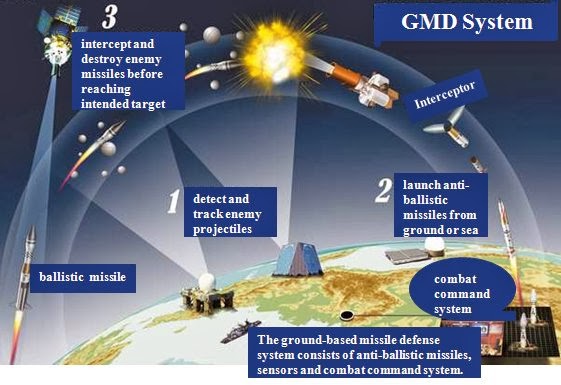Part One of Two Parts:
There is great concern today that North Korea will soon have an intercontinental ballistic missile that will be capable of carrying a nuclear warhead to a city on the West Coast of the United States. There are some estimates that this development is only a few years away. If such a missile were launched at the U.S., is it possible that the U.S. military might be able to intercept and destroy it before it hit its intended target?
Since the dawn of the age of nuclear weapons in 1945, the U.S. has always considered the threat of massive retaliation our best defense against a nuclear attack. In addition to the threat of retaliation, anti-missile defense systems have been discussed. The Army first asked Bell Labs in 1955 to begin studying an antiballistic missile system. Money was spent and a lot of work was done but technical challenges prevented development and sustained deployment of a functional.
In 1972, The U.S. and the Soviet Union signed the Antiballistic Missile Treaty (AMT) which severely restricted both parties from developing big antiballistic missile defense systems for their whole territories. Both parties agreed to limit antiballistic missiles to under 100 interceptors at a single location. The Clinton administration began working on a National Missile Defense system in the 1990s.
The terrorist attacks on 911 motivated the Bush administration to withdraw from the AMT which the Russians had taken over from the Soviet Union. He fast tracked what came to be known as the GMD. Deployment of the system began in 2004 and has continued to this day.
As the first interceptors were built and tested, design problems were reveals. The problems were fixed on some of interceptors at great expense. Later interceptors were based on updated designs. The result of this process was that not all the interceptors contained the same hardware. A 2014 Pentagon report found that “The reliability and availability of the operational [ground based interceptors] is low, and the MDA continues discovering new failure modes during testing.”
A few years ago, a very serious design flaw was found in the interceptors. It turned out that vibrations from the interceptor’s thrusters were affecting the navigation system and throwing the interceptors off course. A new design for the thrusters was developed and the interceptors were upgraded. The new thrusters were tested in 2016 but the results of the test were disputed with the Pentagon saying that the test was successful and the LA Times reporting that the test failed.
The GMD is a work in progress. As new problems are found, solutions are developed and deployed. Critics say that the GMD program should do more testing on components and systems before they are purchased. They call for more oversight for the GMD program. They take exception to the 2010 Department of Defense Ballistic Defense Review that states that "the United States is currently protected against limited ICBM attacks." They are also skeptical of the 2015 U.S. Senate report that claims that the GMD protects the entire U.S. from a North Korean missile attack. The General Accounting Office says that “GMD flight testing, to date, was insufficient to demonstrate that an operationally useful defense capability exists.”
Please read Part Two
Artist’s concept of a GMD system:
